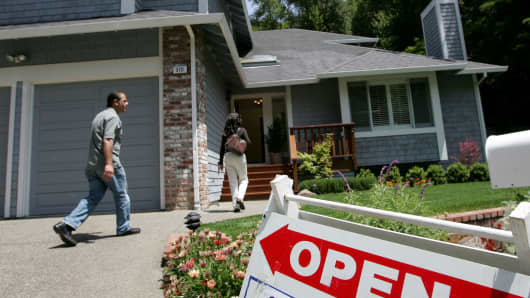Original article posted here.
As the economy and wages improved in 2017, first-time homebuyers were finally moving back into the market — until that turned around again.
Sky-high home prices and few low-priced listings took their toll on these buyers yet again. For those who did buy, they had to pony up and pay more money for less house.
The share of sales to first-time buyers fell to 34 percent in 2017, down from 35 percent in 2016, according to the National Association of Realtors’ annual Profile of Home Buyers and Sellers. That is the fourth-lowest share in the survey’s 36-year history. First-time buyers historically make up closer to 40 percent of homebuyers.
The drop in buyers is, in part, due to a rise in student-loan debt. For those who did buy, 41 percent said they had student debt, up from 40 percent in 2016. The average amount of debt also increased to $29,000 from $26,000 last year.
More than half of buyers owed at least $25,000, and a sizable share said that debt delayed their saving for a down payment. And that down payment had to be larger, given the lack of affordable homes for sale.
“The dreams of many aspiring first-time buyers were unfortunately dimmed over the past year by persistent inventory shortages, which undercut their ability to become homeowners,” said Realtors’ chief economist Lawrence Yun.
“With the lower end of the market seeing the worst of the supply crunch, house hunters faced mounting odds in finding their first home,” he said. “Multiple offers were a common occurrence, investors paying in cash had the upper hand, and prices kept climbing, which yanked home ownership out of reach for countless would-be buyers.”
Getting less for more money
Home prices hit yet another new peak in August, at $282,000, according to Black Knight Financial Services. That happened after 64-consecutive months of annual home-price appreciation. Monthly gains, however, have been falling for the last five months.
Higher prices meant first-time buyers had a higher household income ($75,000) than a year ago ($72,000) and purchased a slightly smaller home (1,640-square-feet vs. 1,650-square-feet in 2016) that was more expensive ($190,000, compared with $182,500 in 2016).
In other words, they got less for more money. For all buyers, 42 percent paid list price or higher for their home, which is up from 40 percent a year, and at a new survey high.
Despite the higher prices, though, single women continued to gain share as buyers — 18 percent, the highest since 2011. They even bought more expensive homes despite earning less than single men. The share of single male buyers stayed at 7 percent, still below the share of unmarried couples (8 percent) for the second-straight year.
A survey released in June by the National Bureau of Economic Research found that men ages 21 to 30 had a larger decline in work hours over the last 15 years than older men or women, due to an increase in time spent playing video games. The number of women attending college is now higher than that of men and that share is rising.
While home ownership is now more expensive and saving for a down payment is harder, there is one bright note from the Realtors’ report: Fewer buyers said the mortgage application and approval process was more difficult than they expected. The process is easier — unfortunately mortgage interest rates are now rising.

